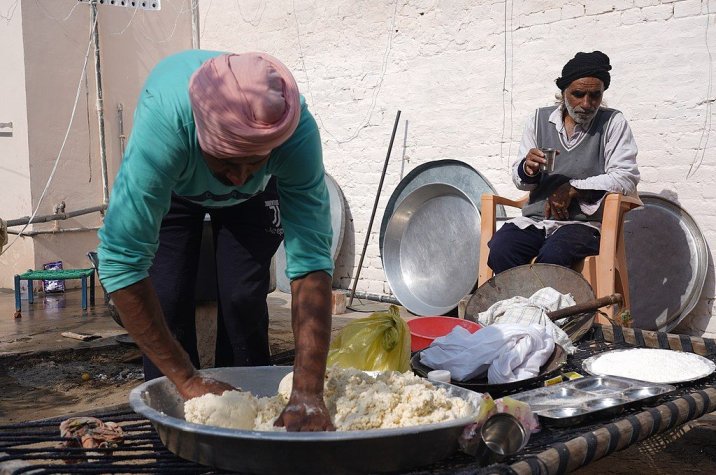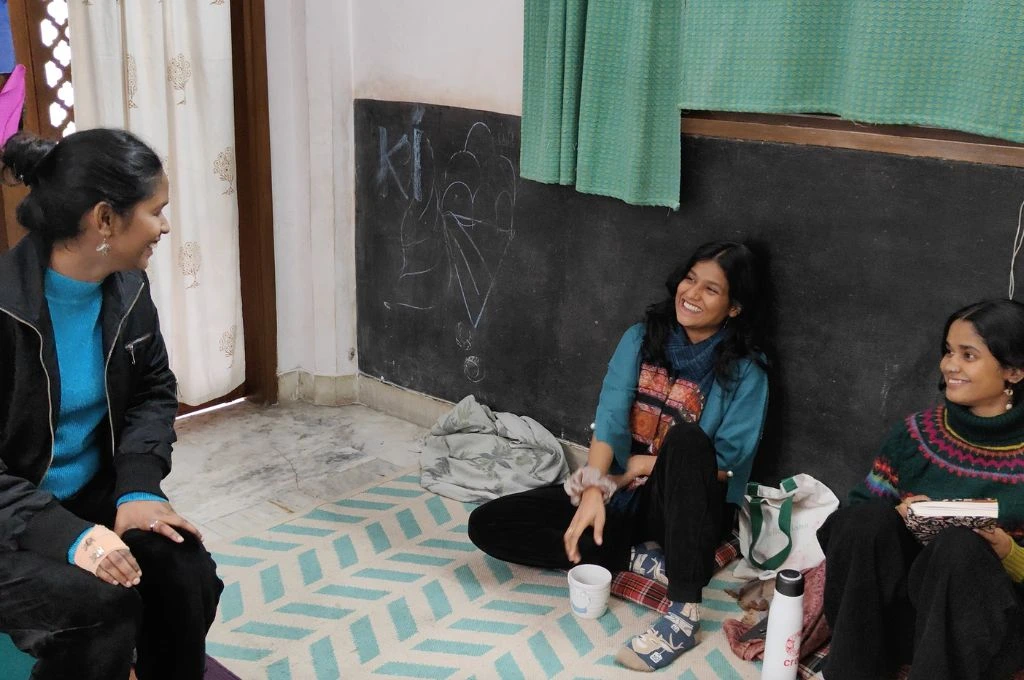On the eve of World Food Day 2022, India slipped six places on the Global Hunger Index and ranked 107 out of 121 countries. When looking at India’s progress on SDG 2: Zero Hunger, the macro picture is quite worrying—70.5 percent of the country’s population cannot afford a healthy meal. While some of this is due to rising food prices and the income shock caused by the COVID-19 pandemic, hunger continues to have a devastating impact on the lives of millions in India who don’t know where their next meal will come from.
However, what has been missing from these macro debates on food security in India is the question of marginalised populations, especially people with disabilities (PwDs), and how they experience the life cycle of procuring, preparing, and consuming food. Belongg, a social venture focused on intersectional inclusion across SDGs, and Enable India, a nonprofit focused on innovations for PwDs, carried out a rapid ethnographic study to examine this issue. The study was conducted in Bengaluru, with the participant group composed of people with varying forms of disabilities, as well as a caregiver and a special educator (unrelated to the participants with disabilities). The study draws inspiration from Enable India’s Project Discovery, which crowdsources solutions from PwDs, their caregivers, and other stakeholders at the grassroots level, such as nonprofits and residential care homes for PwDs. The solutions cater to a range of scenarios—from straining and pouring hot tea to differentiating between spices and picking up food from a plate.
Findings of the scoping study
The findings have significant implications for stakeholders in India’s food and nutrition ecosystem. PwDs suffer from a double burden of food insecurity—they experience difficulties in finding stable employment and also in procuring and preparing food. While there are different roadblocks experienced by people with different disabilities, some common barriers include inaccessible kitchen design, utilities, cutlery, and appliances, and communication challenges with shopkeepers and service staff at eateries. People with disabilities may have to compromise on taste, personal preference, and nutrition, which can lead to them experiencing apathy towards food and a suboptimal quality of life. Access to sufficient quantities of nutritious food remains uncertain for most PwDs. Many resort to skipping meals entirely or eating processed foods and snacks that require little to no preparation. This leaves them vulnerable to malnutrition and disease.
This problem is more pronounced for certain categories of PwDs, such as children or senior citizens who are left alone when their caregivers go to work, childless elderly couples, and unmarried people living alone. More than a fifth of all PwDs in India are elderly persons. The situation is worse in rural areas, where PwDs experience social stigma and are afforded very limited healthcare and assisted living technologies and solutions.
Gender and economic class are also factors to consider when thinking about food and disability. Given the gendered nature of household work in India, male participants with disability rely on female family members to cook their food, despite the fact that their spouses/mothers/sisters are often also disabled. On the other hand, participants with the financial means to employ caregivers engage in the process of ‘facilitated cooking’. By closely instructing their caregivers, providing recipes, and general supervision, they are able to ‘cook’ dishes as per their own tastes and preferences.

Domestic challenges
While some participants are able to engage in cooking and food preparation activities prior to cooking (washing vegetables, fruits, and pulses; chopping and cutting; grinding pastes, etc.), others with more severe disabilities do not engage in any kind of kitchen work. A participant with visual impairment pointed out that it is time-consuming and difficult for her to clean small insects and dirt from rice, vegetables, and peanuts. Although she enjoyed cooking at her home in Maharashtra, she finds it difficult to cook at her paying-guest accommodation in Bengaluru, where the placement of vessels and spices is unfamiliar. A participant with intellectual disability struggles to gauge appropriate quantities of spices, water, and vegetables while cooking and has trouble following the steps of a recipe. Wheelchair users face structural challenges in the kitchen. Either the kitchen door is too narrow for the wheelchair to enter or the countertop is too high; in one case, the countertop was lowered for the wheelchair user, but other members of the participant’s family now find it difficult to use.
Safety in the kitchen is another key factor to consider. The risk of kitchen accidents is heightened for PwDs. For those with a hearing impairment, inability to hear the pressure cooker whistle is the most pressing concern. A deaf participant mentioned accidents occurring in his kitchen due to the lid of the pressure cooker bursting, which has resulted in hot food splattering on his wife’s hands and all over the kitchen. Visually impaired PwDs also face increased risk in the kitchen, especially when placing their hands or faces over the vessel to determine the progress of food preparation, such as to check if the milk is boiling or if steam is rising. “I’m scared to fry food in hot oil, and can’t make out if the food is fried or not (by placing her hand near the vessel or smelling the vapours),” a visually impaired participant stated.
The act of eating and drinking itself presents many challenges. Risks associated with this vary from mild physical discomfort to potentially fatal mishaps. For those with cerebral palsy, consuming solid dry food, soups, and even water are serious choking hazards. These foods need to be converted into states that are more easily consumable (solids into a semi-solid state and liquids into a thickened state), while also retaining some, if not all, of the original taste. Additional health risks arise when water is thickened with substances such as corn starch, which can harm heart health and increase blood sugar levels. Eating can also be a laborious and inconvenient task for many PwDs. Visually impaired persons struggle to lift food using spoons and forks, especially lighter foods that they cannot feel the weight of. For those with cerebral palsy, a tight, five-finger grip is needed to hold cutlery; therefore, spoons and forks with sharper handles are inconvenient for them, and they require ones with rounded and padded handles that allow for a more comfortable grip. Eating with one’s hands instead of cutlery is easier, but handwashing becomes inconvenient. “I prefer to feed her to avoid the trouble of repeatedly washing her hands,” said a participant who is the caregiver of a person with cerebral palsy.
Issues beyond the domestic
To procure groceries and kitchen supplies, the study’s participants prefer online apps such as BigBasket as they are easy to use and offer effortless delivery. In terms of brick-and-mortar stores, they prefer supermarkets such as SPAR and Big Bazaar. Supermarkets usually have ramps, the different sections and products have large and clear labels and signage, and there is limited interaction with shopkeepers and other staff. However, this improved accessibility comes at a greater cost; supermarkets are more expensive, and so for a majority of PwDs, local kirana stores serve as the more practical choice to visit on a daily basis. However, they experience many more accessibility and communication challenges at smaller stores. Those with an intellectual disability face difficulty in comprehending the total bill amount and calculating change. Handling cash and counting change is also challenging for visually impaired people. “People (at shops) may cheat us or give us rotten things,” a visually impaired participant said, pointing out that PwDs are not given enough time to assess each vegetable/fruit and ascertain its quality. “People hurry us up or offer to do it for us, and we end up with rotten vegetables in our bag.”
While travelling in flights and trains, eating becomes tricky because of food packaging, spatial constraints and difficult-to-use cutlery.
Ordering food at restaurants isn’t any easier. When eating at or ordering food from restaurants, participants face communication issues with service staff. Those with a hearing impairment struggle to communicate over the phone with food delivery executives when required to clarify their home address and provide delivery instructions. Eating at street-side food stalls and restaurants is also challenging due to inaccessible pavements and the hazards of traffic. While travelling in flights and trains, food packaging is inconvenient and difficult to open, and eating becomes tricky because of spatial constraints and because cutlery is not easy to use. Although eating outside may seem like a non-essential aspect of the food life cycle, it is just as important as it allows people to experience the joy of different cuisines, break away from monotony, and participate in society.
There is an urgent need for more in-depth research to trace a disabled person’s journey through the cycle of food preparation and consumption, and uncover the various pain points they experience, as well as the scope for potential solutions to alleviate these pain points. While participants in this study, and most disabled persons in the country, adapt to their circumstances and find ways to consume food and water, there is immense potential for the innovation of gadgets and tools; sensitisation of service staff, shopkeepers, and the general public; and redesigning of spaces such as stores and restaurants to alleviate widespread accessibility and communication challenges. These steps can ensure that food preparation and consumption become not only efficient and convenient but also a truly enjoyable experience for all people with disabilities.
With inputs from Sayomdeb Mukerjee, Nirat Bhatnagar, and Soma Banerjee.
—
Know more
- Learn about assistive devices available in India for PwDs to use at home and at work.
- Read about the intersections of disability with caste and gender in India.
- Understand why women with disabilities are more likely to experience food insecurity and malnutrition.
Do more
- Interact with these experts working on disability to learn how you can contribute at an individual and/or organisational level.





